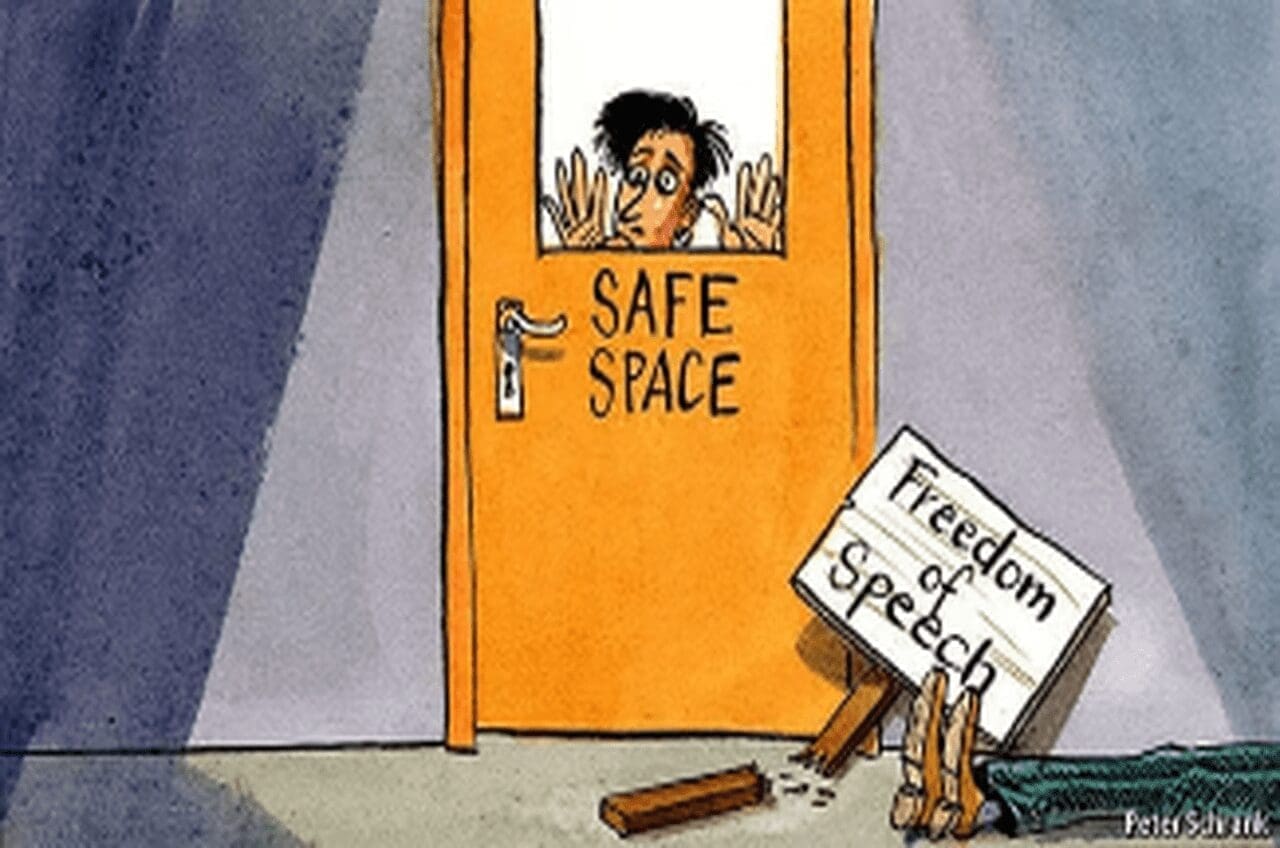Imagine walking into a lecture hall, brimming with anticipation for a riveting discussion on historical atrocities or controversial social issues, only to be halted by a disclaimer: “Warning: This content might be emotionally distressing.” Now, picture a designated “safe space” on campus—a cozy, metaphorical pillow fort—where you can retreat to avoid the sting of discomfort altogether.
Welcome to the modern university experience. But is this ‘cocooning‘ approach truly empowering students, or merely wrapping them in bubble wrap?
The rise of the coddled student
In recent years, the trend of issuing “trigger warnings” and creating “safe spaces” has gained traction, particularly in progressive institutions. The ethos behind these practices is undeniably well-intentioned. Universities aim to cultivate an environment insulated from potentially distressing content. Because heaven forbid a 20-year-old be exposed to challenging ideas—far safer to ‘mollycoddle‘ them as if they’re still in kindergarten. After all, who wants to deal with the fallout of a student actually engaging with the real world?
But here’s the rub: Are universities helping students by wrapping them in emotional cotton wool, or are they nurturing a generation of the easily offended?
The intent vs. the outcome
“Trigger warnings” originated in the mental health community to assist individuals with PTSD in avoiding content that might provoke flashbacks. The intent is noble, yet its academic application often resembles a sledgehammer wielded to crack a walnut, if you will. For instance, a 2023 study from Harvard revealed that trigger warnings did not significantly reduce distress and might even reinforce a victim mentality.
Consider this: what if these warnings inculcate fragility instead of fostering resilience? A fragility that makes students wilt in the face of any opposition, ensuring that they emerge into adulthood as delicate flowers, easily bruised by the slightest wind of dissent.

Safe spaces: ‘sanctuaries or silos?
Safe spaces, by definition, are environments where individuals can feel free from harassment or discrimination. At least, that’s the theory. In practice, they sometimes resemble ideological echo chambers, where only like-minded views are welcome and dissenting opinions are treated like unwelcome guests at dinner parties.
Imagine this: A campus safe space where students can retreat to avoid a speaker whose views they find offensive—because nothing says “higher education” like avoiding exposure to ideas that challenge your worldview. Safe spaces are meant to be sanctuaries, but are they becoming silos instead, where critical thinking goes to die sans any burial?
And what if—just what if—these spaces are less about protection and more about insulation? Insulating students from the challenges that might help them grow much like a ‘hothouse‘ protecting delicate plants from the elements but ultimately leaving them unprepared for the outside world.
The paradox of protection
There’s an irony here that’s hard to ignore. Once bastions of free thought and rigorous debate, universities are increasingly seen as ‘coddling‘ institutions where students are protected from the discomfort that fosters growth. After all, how can one develop resilience without facing adversity? How does one instill critical thinking without grappling with challenging ideas?
A 2017 survey from the Knight Foundation found that 49% of students supported “safe spaces” on campus, but a significant portion also believed these spaces might limit free expression. It’s a paradox: the desire to create an inclusive environment versus the risk of stifling intellectual diversity. It’s as if universities are saying, “Think critically, but not too critically, because you might hurt someone’s feelings.”. So, where exactly is that elusive ‘fine line,’ and how can we spot it just in time to dodge stepping on someone’s toes?
The alternative?
Should universities throw students into the deep end, exposing them to every uncomfortable truth and controversial idea without a lifeline? Not necessarily. There’s an equilibrium to be struck. Providing context for complex material is essential, but it’s different from wrapping students in a protective bubble that shields them from the very essence of higher education: the challenge to think, question, and grow.
What if we created “brave spaces” instead of “safe spaces“? These spaces would allow students to engage with challenging ideas, debate, and disagree with respect and empathy. What if we cultivated resilience instead of trigger warnings by teaching students how to confront discomfort, process it, and emerge stronger on the other side?
The bigger picture

In the grand scheme of things, the debate over trigger warnings and safe spaces isn’t just about campus culture. It’s about the kind of society we’re creating. Are we raising a generation that is emotionally and intellectually equipped to handle the complexities of the natural world, or are we setting them up to be perpetually outraged and easily offended?
Imagine a future where a warning prefaces every problematic conversation, and every dissenting opinion is met with a retreat to a safe space. Is that really the kind of world we want? Or do we want a society where people can engage in robust debate, handle discomfort, and are not just protected from harm but prepared for life?
Conclusion: coddling or caring?
The question remains: Are “trigger warnings” and “safe spaces” truly about caring for students, or are they just a modern form of coddling? It’s a fine line between compassion and condescension, protection and patronization. Perhaps it’s time to reconsider the role of discomfort in education—not as something to be avoided, but as something to be embraced, as a vital part of the learning process.
So, the next time you see a trigger warning or a safe space, ask yourself: Is this protecting students from harm or merely protecting them from growth?
And as we reflect on that, let’s hope the next generation of graduates are ready for the real world—because, spoiler alert: there won’t be any trigger warnings out there.









